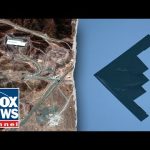In a striking development, former President Donald Trump announced a significant military action involving U.S. B-2 bombers targeting critical nuclear sites in Iran. This announcement, made via Trump’s social media platform, Truth Social, came shortly after reports emerged that six B-2 bombers were seen departing from Whiteman Air Force Base late at night. The timing of this operation, believed to be a carefully planned strike, has garnered attention and raised eyebrows internationally.
The primary objective of this mission was to disrupt Iran’s nuclear capabilities by striking at three different sites, including the notorious Fordow facility. Located underground, Fordow is famous for its heavy security and sophisticated defenses. Built in 2006, it has long been considered the heart of Iran’s nuclear ambitions. It was noted that the B-2 bombers likely executed multiple passes to ensure successful penetration of the facility’s deep underground structure. The strategy required dropping a series of massive 30,000-pound bunker-buster bombs, designed to create a hole where subsequent bombs could be deployed for maximum impact. The execution of this operation highlights the military’s capability and the extensive planning involved in such a complex mission.
Experts suggest that the success of this operation was also made possible by the hard work of Israeli forces in the days leading up to the strikes. Israeli air and defense systems played a crucial role in neutralizing Iranian air defenses, allowing U.S. aircraft the freedom to operate over Iran without the immediate threat of retaliation. Notably, Israel had already conducted preliminary strikes against Iranian missile and drone capabilities, clearing a path for this latest bombing run. Their collaboration with U.S. forces underscores the strong military alliance between the two nations.
This military action comes at a time of heightened tensions in the region, with ongoing concerns about Iran’s nuclear program and its threats to regional stability. The coordinated efforts from both U.S. and Israeli forces illustrate a strong commitment to countering Iran’s ambitions. With reports indicating that Iranian missile launchers have been substantially targeted and neutralized, Israeli experts assert that the operational freedom granted to military aircraft now poses greater risks to Iranian strategic capabilities.
As details continue to unfold, the implications of this bombing campaign raise important questions about future U.S. involvement in Middle Eastern conflicts and the delicate balance of power in the region. Both supporters and critics of Trump’s actions will be observing closely, as such military decisions can have far-reaching consequences not just for Iran, but for international relations as a whole. One thing remains clear: tensions in this region are far from settled, and the stakes have never been higher, demanding a watchful eye on the unfolding drama around the ever-complex relationships within foreign politics.




